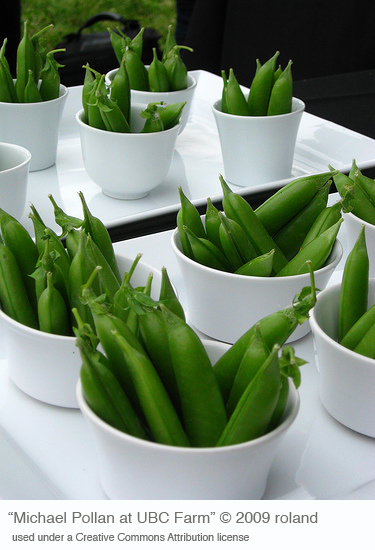by Fay Epps MS, CHHC
You know that average fast-food value meals are gigantic, but did you know that they average anywhere from 700-1,200 calories with the fries alone accounting for more than 500 calories and 26 grams of fat? Restaurant portions are no better, with servings routinely double what the average healthy person needs to consume in one sitting. If you’re trying to lose weight, one of the best things you can do is forget eating out!
As a country, we’re making small strides to be better, as evidenced by the First Lady’s revision of the USDA food pyramid and the release of “MyPlate” in 2010. Half of the plate is dedicated to fruits and vegetables; the other half to protein and grains. New York University nutrition professor and food activist Marion Nestle found it to be an improvement, but took issue with protein being labeled as a food because it’s actually a macro-nutrient. According to Nestle, we consume twice the protein we need and the meat industry continues to work hard to promote meat as protein even though there are ample vegetarian sources. Dr. Walter Willett, from the nutrition department at Harvard School of Public Health, developed a “Healthy Eating Plate” that closely resembles MyPlate but swaps water for dairy and adds in healthy oil.
Obviously, there are differing views on what food to have on your plate. And the question always comes down to: how much? An anti-inflammatory approach to eating—which many health experts, including Dr. Andrew Weil support for weight-loss and prevention of disease—closely resembles the heart-healthy Mediterranean diet.
Here’s what that looks like on any given day:
–Protein: 20-30% (from vegetable and hormone-free animal sources, except pork)
–Fat: 20-30% (such fats as nuts, seeds, avocado, healthy oils)
–Carbohydrates: 40-60% (from non-refined sources, i.e.: whole grain and starchy vegetables)
This 2:1:1 ratio is easy to remember and allows you to pile on as many water-based (non-starchy) vegetables as your heart desires! If it helps you visualize, 2-3 ounces of protein is roughly equivalent to the size of your iPhone and a 1/2 cup is a good gauge for measuring out a portion of whole-wheat, quinoa or buckwheat pasta. But instead of obsessing over portion, know that you should not have to greatly restrict calorie intake to lose weight if you are eating the right foods.
Practical wisdom can get you far. As Michael Pollan now famously said in Food Rules, his common sense guide that demystifies eating, “Eat food. Not too much. Mostly plants.” Now those are words to live by.
Author’s content used under license, © Sprouted Content, LLC
______________________
Resources
Harvard School of Public Health’s “Healthy Eating Plate” — http://www.hsph.harvard.edu/nutritionsource/
The Smartest Weight Loss Tricks Ever — http://fitbie.msn.com/slideshow/smartest-weight-loss-tricks-ever/slide/1


